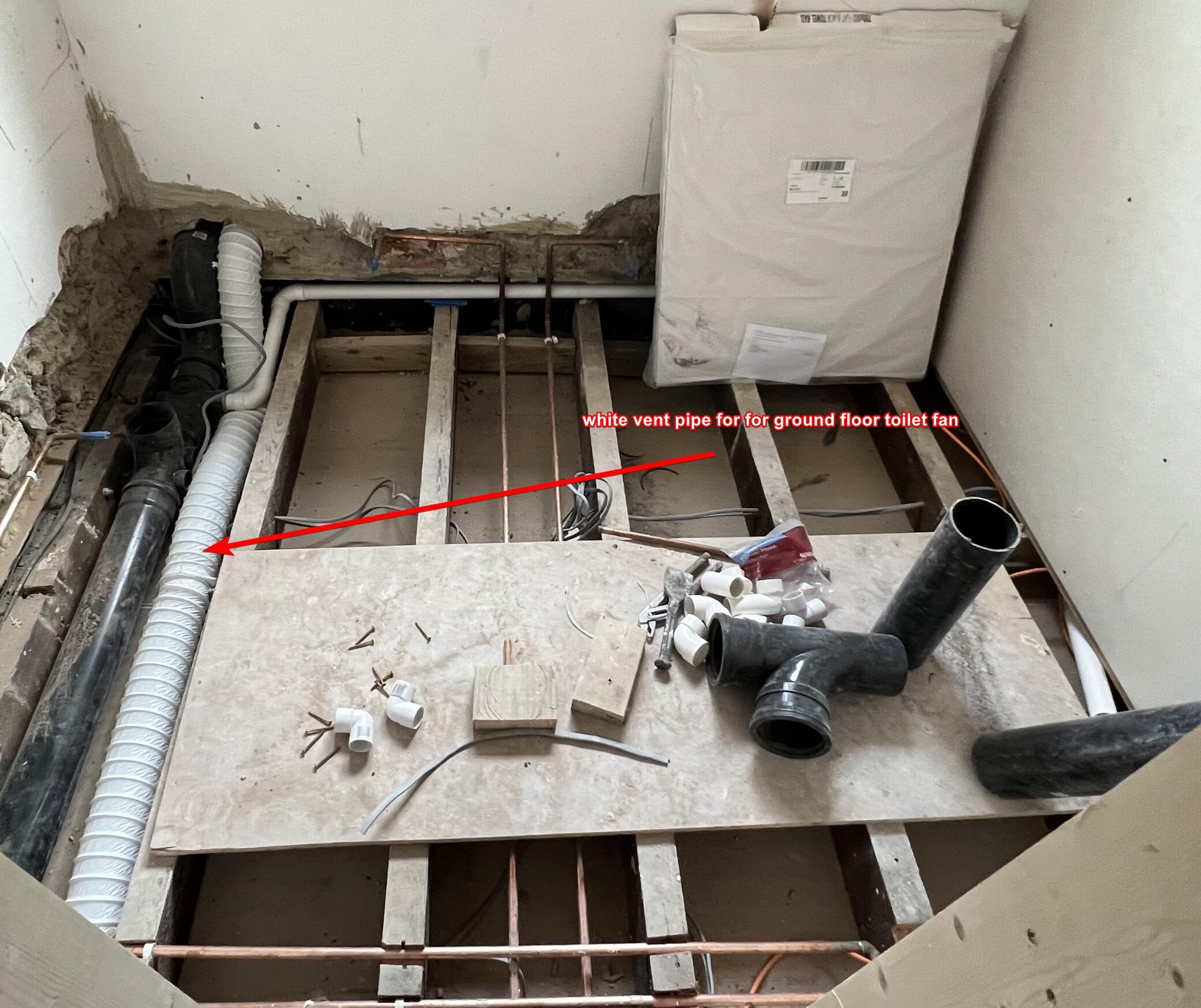This is a 100+ years old Victoria house and I did a total renovation of the house + side extension in the kitchen. The problem is, we got condensation issue on the ground floor in the kitchen after side extension. We have been battling on this issue for 1+ year. At the beginning, we add a vent on the ground floor ceiling where the water dripping, but as you can see it still have condensation whenever we took hot shower on a cold night. I can see water dripping from the ceiling after shower.

We have been told the problem might be either or both of the issues below
1. The black waste pipe is too close to the white vent tube on the ground floor ceiling. Showering water will flow to the black water pipe and go out of the house. The white vent pipe is the vent for the ground floor toilet fan which go out of the house.
2. The beam that is used by the extension isn't insulated. So the black waste pipe become pretty hot after shower and the beam start condensation.
In order to better illustrate the layout, here is the picture
This is the 1st floor bathroom, the location of the ground floor ceiling where condensation happen

1st floor Bathroom again after the black waste pipe is installed

1st floor Bathroom again, this is after the white vent tube is installed. The white vent tube is used by the ground floor toilet. The ground floor toilet has no window so we use this vent tube to vent the air out of the house. You can see the cold air vent tube is almost next to the hot waste pipe. One suspect is that the condensation happen here after hot shower.

The following picture show where the condensation happen, it's pretty much next to the extension beam. The location of the first picture of the post is the red circle on the right.


We have been told the problem might be either or both of the issues below
1. The black waste pipe is too close to the white vent tube on the ground floor ceiling. Showering water will flow to the black water pipe and go out of the house. The white vent pipe is the vent for the ground floor toilet fan which go out of the house.
2. The beam that is used by the extension isn't insulated. So the black waste pipe become pretty hot after shower and the beam start condensation.
In order to better illustrate the layout, here is the picture
This is the 1st floor bathroom, the location of the ground floor ceiling where condensation happen

1st floor Bathroom again after the black waste pipe is installed

1st floor Bathroom again, this is after the white vent tube is installed. The white vent tube is used by the ground floor toilet. The ground floor toilet has no window so we use this vent tube to vent the air out of the house. You can see the cold air vent tube is almost next to the hot waste pipe. One suspect is that the condensation happen here after hot shower.

The following picture show where the condensation happen, it's pretty much next to the extension beam. The location of the first picture of the post is the red circle on the right.

Last edited:








